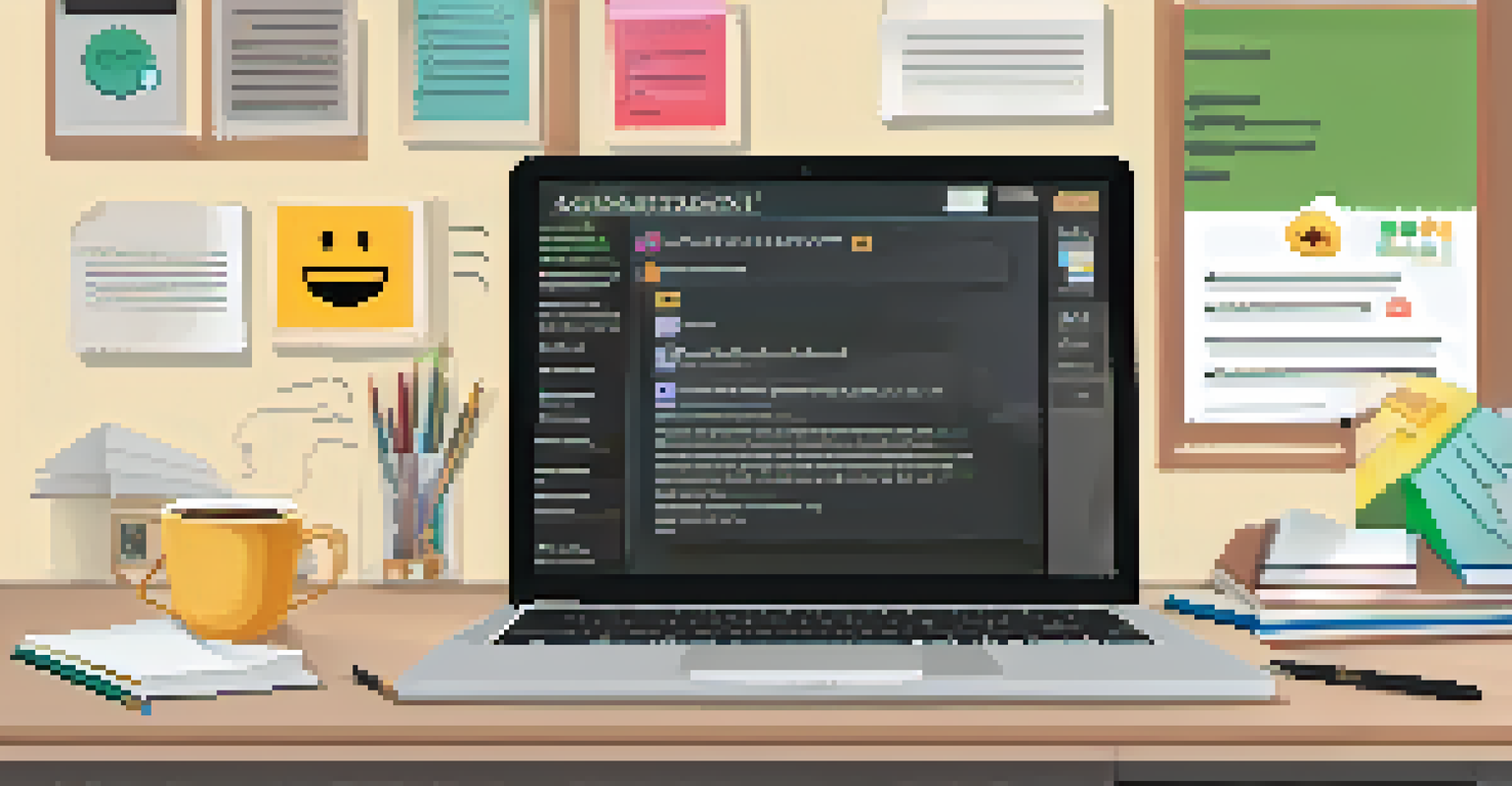Evaluating Teacher Feedback in eLearning Environments

Understanding the Role of Teacher Feedback in eLearning
Teacher feedback is a crucial element in eLearning environments, as it provides students with guidance and support. Unlike traditional classrooms, where feedback is often immediate and face-to-face, online settings require careful consideration of how and when feedback is delivered. This can significantly impact a student's learning experience and motivation.
Feedback is the breakfast of champions.
In eLearning, feedback can take various forms, including written comments, audio recordings, or video responses. Each type has its advantages, but the key is to ensure the feedback is constructive and timely. When students receive clear, actionable advice, they are more likely to engage with the content and improve their performance.
Moreover, effective feedback not only addresses students' strengths and weaknesses but also encourages self-reflection. By fostering a growth mindset, students learn to view feedback as a valuable tool for improvement rather than just criticism.
Criteria for Evaluating Teacher Feedback Quality
When evaluating teacher feedback, several criteria can help ascertain its quality. Clarity is paramount; feedback should be easy to understand and devoid of jargon unless it's explained. This ensures that students can grasp the concepts being communicated without unnecessary confusion.

Another important criterion is relevance. Feedback must directly relate to the student's work and learning objectives. For instance, if a student struggles with a specific concept, the feedback should address that area, providing insights that enhance understanding and encourage further exploration.
Importance of Timely Feedback
Providing timely and constructive feedback enhances student engagement and fosters a deeper connection with the learning material.
Lastly, timeliness plays a vital role in the effectiveness of feedback. Providing feedback promptly allows students to apply the insights while the material is still fresh in their minds, facilitating immediate improvement and reinforcing learning.
The Impact of Feedback on Student Engagement
Feedback can significantly influence student engagement in eLearning settings. When students receive thoughtful and constructive feedback, they often feel more connected to the course and their instructor. This connection can lead to increased motivation and a greater willingness to participate in discussions and activities.
What is the shortest word in the English language that contains the letters: abcdef? Answer: feedback. That’s the breakfast of champions.
Conversely, vague or delayed feedback can result in disengagement. Students may feel frustrated or lost if they don’t understand how to improve or if they perceive that their efforts are not being acknowledged. This can create a disconnect between the student and the learning process.
Ultimately, fostering an environment where feedback is valued can enhance the overall learning experience. Engaged students are more likely to explore new ideas, take risks in their learning, and develop critical thinking skills that are essential for success.
Using Technology to Enhance Feedback Processes
Technology offers numerous tools that can enhance the feedback process in eLearning. Learning Management Systems (LMS) often come equipped with features that allow for streamlined feedback delivery, such as inline comments or video feedback options. These tools can make the feedback process more interactive and engaging for students.
Additionally, the use of analytics can provide insights into student performance and common areas of difficulty. Instructors can use this data to tailor their feedback to address specific challenges faced by the class, making it more impactful and relevant.
Criteria for Quality Feedback
Quality feedback should be clear, relevant, and timely to effectively support student learning and improvement.
Moreover, technology enables asynchronous communication, allowing students to access feedback at their convenience. This flexibility ensures that students can reflect on the feedback and apply it thoughtfully without the pressure of immediate responses.
Creating a Feedback Culture in eLearning
Establishing a feedback culture within eLearning environments is essential for fostering continuous improvement. This involves not just providing feedback but also encouraging students to seek it actively and use it constructively. Instructors can promote this culture by modeling feedback-seeking behaviors and expressing a willingness to engage with student inquiries.
Regularly incorporating peer feedback opportunities can also enhance this culture. When students learn to give and receive feedback among themselves, they develop critical thinking and communication skills while deepening their understanding of the material.
Ultimately, a feedback culture nurtures a supportive learning community where students feel empowered to take charge of their learning journey, increasing their confidence and academic success.
Challenges in Providing Effective Feedback
Despite the importance of feedback, several challenges can arise in eLearning environments. One primary issue is the lack of non-verbal cues that are often present in face-to-face interactions. Without body language and tone, written feedback may be misinterpreted, leading to confusion or demotivation.
Another challenge is the potential volume of feedback required in large online classes. Instructors may struggle to provide individualized feedback to each student while maintaining timely communication. This can dilute the quality of the feedback provided.
Creating a Feedback Culture
Nurturing a feedback culture encourages students to actively seek and use feedback, promoting continuous improvement and confidence.
Additionally, students may have varying levels of familiarity with digital tools used for feedback. Some may find it challenging to navigate these platforms, which can hinder their ability to engage fully with the feedback process.
Best Practices for Teachers in Delivering Feedback
To overcome the challenges of providing effective feedback, teachers can adopt several best practices. First, using clear and concise language is crucial. Instructors should aim to communicate their thoughts directly and avoid overly complex terminology that might confuse students.
Incorporating specific examples from students' work can also enhance the feedback. By pointing to particular sections or ideas, teachers can provide concrete suggestions for improvement, making it easier for students to understand and apply the feedback.

Lastly, encouraging a two-way dialogue about feedback can be beneficial. Allowing students to ask questions or seek clarification can help ensure they fully grasp the feedback, leading to better learning outcomes.